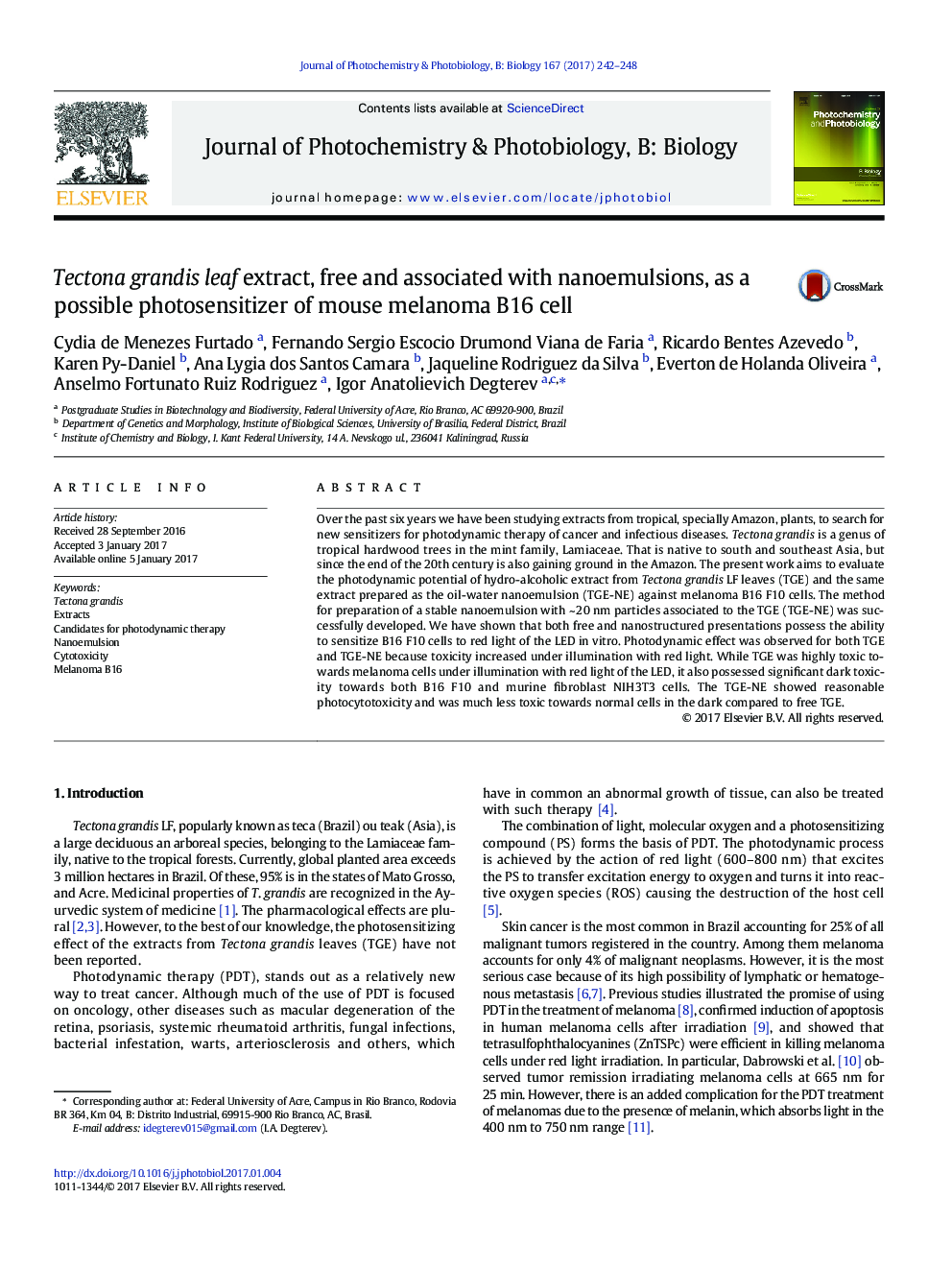| کد مقاله | کد نشریه | سال انتشار | مقاله انگلیسی | نسخه تمام متن |
|---|---|---|---|---|
| 4754723 | 1418066 | 2017 | 7 صفحه PDF | دانلود رایگان |

- Prepared hydro-alcoholic extract of tropical hardwood tree leaves
- The extract is a possible photosensitizer for photodynamic therapy of melanoma B16.
- Prepared and characterized a stable fine nanoemulsions based on this extract
- The combination of the extract with nanoemulsion reduces the dark toxicity extract.
- Optimal conditions selected for use the extract as photosensitizer for PDT
Over the past six years we have been studying extracts from tropical, specially Amazon, plants, to search for new sensitizers for photodynamic therapy of cancer and infectious diseases. Tectona grandis is a genus of tropical hardwood trees in the mint family, Lamiaceae. That is native to south and southeast Asia, but since the end of the 20th century is also gaining ground in the Amazon. The present work aims to evaluate the photodynamic potential of hydro-alcoholic extract from Tectona grandis LF leaves (TGE) and the same extract prepared as the oil-water nanoemulsion (TGE-NE) against melanoma B16 F10 cells. The method for preparation of a stable nanoemulsion with ~Â 20Â nm particles associated to the TGE (TGE-NE) was successfully developed. We have shown that both free and nanostructured presentations possess the ability to sensitize B16 F10 cells to red light of the LED in vitro. Photodynamic effect was observed for both TGE and TGE-NE because toxicity increased under illumination with red light. While TGE was highly toxic towards melanoma cells under illumination with red light of the LED, it also possessed significant dark toxicity towards both B16 F10 and murine fibroblast NIH3T3 cells. The TGE-NE showed reasonable photocytotoxicity and was much less toxic towards normal cells in the dark compared to free TGE.
Journal: Journal of Photochemistry and Photobiology B: Biology - Volume 167, February 2017, Pages 242-248